| COVID-19(新型コロナウイルス感染症 情報: ベルギーでは封鎖が行われています。大量のイベント(コンサートなど)はキャンセルされます。レストランやホテルは、容量が少なく、制限が設けられています。必須ではない事業は閉鎖されています。いくつかの州では、フェイスマスクを着用するか、少なくともフェイスマスクを携帯する必要があります。特にEU、シェンゲン圏、および英国以外の国では、他の国との間の必須ではない旅行が制限されています。到着した旅行者は到着時に検疫しなければならない場合があります 彼らがどこから来ているかに応じて。一般的なルールと状況を確認してください ベルギーのコロナウイルスのウェブサイト 地方自治体の規制に関する自治体のウェブサイト。 | |
| (情報の最終更新日は2020年12月25日) |
の低地の国 ベネルクス, ベルギー (オランダの: ベルギー, フランス語: ベルギー, ドイツ人: ベルギー)西ヨーロッパの岐路に立っています。壮大な近代建築と田舎の牧歌で大陸が有名な歴史的建造物と結婚しています。その首都、 ブリュッセル、の本部があります 欧州連合.
ベルギーは比較的裕福な国ですが、世界で最も政治的に複雑な国の1つでもあります。フランダース(オランダ語圏)とワロン地域(フランス語圏)の言語と文化の違いにより、いくつかの広範囲にわたる改革が行われ、この継続的な対立により、ベルギーの政治は非常に複雑になり、通常のベルギー人でさえ意味をなさなくなりました。本当に何が起こっているのか。これらすべてにもかかわらず、2つの半分は、ヨーロッパで最も魅力的で歴史的な都市のいくつかを含む国を形成し、大陸への訪問者にとって真の「必見」です。
理解する
北海の海岸に横たわって、ベルギーのすぐ隣人は フランス 南西に、 ルクセンブルク 南東に、 ドイツ 東と オランダ 北に。
ベルギーは人口密度の高い国であり、都市化、運輸、産業、商業的および集約的農業の相反する需要のバランスをとろうとしています。大量の原材料を輸入し、大量の工業製品を主にEUに輸出しています。
歴史
ベルギーはいくつかの旧中世の大国の相続人であり、この国への旅行中にこれらの痕跡がいたるところに見られます。
崩壊後 カロリング帝国 9世紀には、現在ベルギー、オランダ、ルクセンブルグである領土は、間もなくドイツ帝国に吸収される一時的な王国であるロタリンギアの一部でした。しかし、「下ロートリンゲン」の特殊文字は封建帝国でそのまま残っていました。これは、現在のベルギー、オランダ、ルクセンブルグを含む一般的な用語であるネーデルラントの起源です。
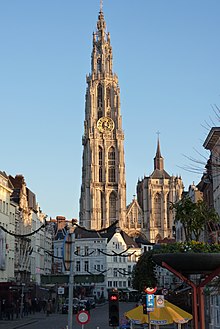
ネーデルラントの広く自治された領地は中世ヨーロッパで最も豊かな場所の1つであり、ブルージュ、ブリュッセル、アントワープ、ゲント、ルーヴェン、トゥルネー、モンスなどの豊かな建物にこの過去の富の痕跡が見られます。これらの都市は次第に衰退しました強力で野心的な家族、ブルゴーニュ公爵の管理下にあります。公爵の全領域は、ネーデルラントからスイスの国境まで広がっていました。ブルゴーニュ公は、富、戦略、同盟を利用して、ロタリンギアの再建を目指しました。最後の公爵、シャルル・ザ・ボールドの死は、この夢に終止符を打ちました。しかし、ブルゴーニュ公の宝物は、ベルギーの美術館やランドマークでの彼らの規則の証として残っています。
その後、強力なハプスブルク家はネーデルラントから継承されました。 改革 ベルギーとオランダが最初に分離された理由です。低国の北半分はプロテスタントを受け入れ、ハプスブルク家の支配に反抗しましたが、南半分はその支配者とカトリック信仰の両方に忠実であり続けました。これらの2つの半分は、現在のベルギーとオランダにほぼ対応しています。
ベルギーは、ハプスブルク家のどの支部が統治したかによって、オーストリア領ネーデルラント、次にスペイン領ネーデルラントと呼ばれていました。強力なドイツ皇帝でスペインの王、チャールズ5世は、ベルギーの都市ゲントで生まれ、ブリュッセルから統治しました。シャルルロワの街やビールのブランドなど、ベルギーの多くの場所は彼にちなんで名付けられています。毎年、ブルッセラーズはオメガンと呼ばれる街で彼の最初のパレードをエミュレートします。
ベルギーは一時的にナポレオン帝国の一部でした。ナポレオンの敗北後、ネーデルラント全体からなるオランダ王国が創設されました。しかし、宗教的な反対は依然として残っており、ベルギーの自由主義者とオランダの貴族の間の政治的な違いによって分裂が悪化しました。ベルギーは、短い革命とオランダとの戦争の後、1830年にオランダから独立しました。
第一次世界大戦と第二次世界大戦中にドイツが占領し、戦闘地帯の近くに多くの戦没者墓地があり、それらのほとんどはイーペル周辺にあります(英語では、古風に次のように表現されています) イープル、第一次世界大戦で集中的に使用されているため、マスタードガスの別名であるYperite)。それは、過去半世紀に、近代的で技術的に進歩したヨーロッパの国家として、そしてNATOとEUの加盟国として繁栄してきました。北のオランダ語を話すフレミングスと南のフランス語を話すワロン人の間の緊張は、これらの地域に正式な承認と自治権を与える憲法改正につながりました。
地形
北西の平らな海岸平野、中央のなだらかな丘、樹木が茂った丘、南東のアルデンヌの森の谷。
気候
温帯;穏やかな冬と涼しい夏。一般的に、かなり雨、湿気、曇りです。 1976年から2006年までの10年間のベルギーの年間平均気温は10°Cでした。これは、非気象学者にとってはやや無意味な指標です。
電気
電気は220〜230Vおよび50Hzで供給されます。コンセントはCEE7 / 5(突き出たオスアースピン)で、CEE 7/5(接地)、CEE 7/7(接地)、またはCEE 7/16(非接地)プラグのいずれかを受け入れます。古いドイツタイプのCEE7 / 4プラグは、このタイプのコンセントにあるアースピンに対応していないため、互換性がありません。ただし、最新のヨーロッパのアプライアンスのほとんどには、CEE 7/5(ベルギーとフランス)とCEE 7/4(ドイツ、オランダ、スペイン、およびヨーロッパのほとんど)の両方のコンセントに適合するハイブリッドCEE7 / 7プラグが取り付けられています。
英国、アイルランド、オーストラリア、ニュージーランド、デンマーク、イタリア、スイス、および230Vと50Hzを使用する他のすべての国からの旅行者は、異なるプラグを使用し、ベルギーでアプライアンスを使用するにはプラグアダプターが必要です。
110 V 60 Hzを使用する米国、カナダ、日本、およびその他の国からの旅行者は、電圧コンバーターが必要になる場合がありますが、一部のラップトップ、携帯電話充電器、およびその他のデバイスは110Vまたは230Vのいずれかを受け入れることができるため、単純なプラグアダプターのみが必要です。アプライアンスを接続する前に、アプライアンスの電圧定格プレートを確認してください。
地域
ベルギーは、北から南にリストされた3つの地域で構成されています。

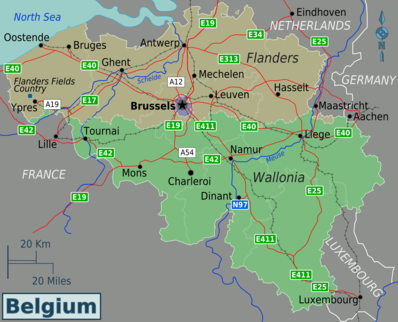
| フランダース (西フランダース, イーストフランダース, アントワープ, フランダースブラバント, リンブルフ) 国の北部、オランダ語圏。のような有名な都市が含まれています アントワープ, ゲント そして ブルージュ. |
| ブリュッセル 国のバイリンガルの首都地域と欧州連合の本部。 |
| ワロン (エノー, リエージュ, ワロンブラバント, ナミュール, ルクセンブルク) 南部のフランス語圏地域。東部のドイツ国境近くに小さなドイツ語圏が組み込まれています。 |
都市
ベルギーは非常に高い都市化率を持っており、そのような小さな領域には驚くほど多くの都市があります
- 1 ブリュッセル —ベルギーの首都とEUの非公式の首都。素敵な歴史的中心部といくつかの興味深い美術館。ヨーロッパで最も多文化的な都市の1つ。
- 2 アントワープ —ベルギーで2番目に大きな都市で、巨大な大聖堂、中世の街並み、芸術的遺産があり、ファッションに最適な場所です。
- 3 ブルージュ — 14世紀にヨーロッパで最も裕福な都市の1つであり、観光客でありながら非常に本格的で、中世で静かな夜があり、小さなゲストハウスや家族経営のホテルがチェーンホテルを大幅に上回っています。
- 4 ゲント —かつてはヨーロッパ最大の都市の1つでしたが、現在はアントワープとブルージュが完璧に混ざり合っています。運河のある居心地の良い都市でありながら、豊かな歴史と活気ある学生人口があります。
- 5 ルーヴェン —ヨーロッパで最も古い大学の1つが支配する小さな都市。美しい歴史的中心部と活気あるナイトライフ。
- 6 リエージュ —ワロン地域で二番目に大きな都市で、広い川沿いにあり、近くの丘にハイキングやリゾートがある工業都市の景観は、非常に強く、独立した性格と刺激的なナイトライフを持っています。
- 7 メッヘレン —大聖堂の周りに素敵な歴史地区がある小さな中世の街。
- 8 モンス —に2つのサイトを刻印するという特別な特権があります
 ユネスコ世界遺産 人類の無形文化遺産の代表リストのリストと1つのイベント。
ユネスコ世界遺産 人類の無形文化遺産の代表リストのリストと1つのイベント。 - 9 ナミュール - の首都 ワロン、サンブルとムーズと城塞の合流点で。
その他の目的地
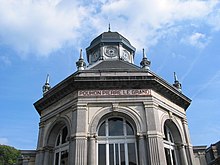
- 1 クラーイネム —郊外に豊かな産業史を持つ自治体 ブリュッセル 多くの歴史的建造物があります。
- 2 テルビュレン —緑豊かなソニアンの森、公園、王室の夏の離宮に近いことで知られています。
- 3 グリンベルゲン —同じ名前のビールで知られ、世界的に有名になりましたが、それでもその修道院で生産されています。
- 4 アルデンヌ —ベネルクスで最も人口の少ない地域で、これは森林に覆われた丘陵地帯です。
- 5 ディナン —見事な自然環境にある小さな街、カヌーやロッククライミングなどのアドベンチャースポーツで人気のスポットで、冬に訪れるのが最適です。
- 6 パジョトンラン —「北のトスカーナ」とも呼ばれ、ブリュッセルの西にある緑豊かな地域で、なだらかな丘、牧草地、小さな村、城で構成されています。グーズビールの本拠地で、ハイキング、サイクリング、乗馬ツアーに最適です。
- 7 スパ —世界中のすべての温泉にその名前を付けた温泉街の温水処理は、何世紀にもわたって訪問者を魅了してきました。
- 8 イープル, 9 ポペリンゲ 第一次世界大戦中に破壊されたこのかつての軍事要塞には、記念碑や墓地があります。
- 10 セントニクラス —マーケット広場(ベルギーで最大)、毎年恒例の気球フェスティバル、スヘルト川沿いの近くの風景で知られています。
入れ
エントリー要件
ベルギーはのメンバーです シェンゲン協定.
- 通常、条約に署名して実施した国の間には国境管理はありません。これには、ほとんどの欧州連合と他のいくつかの国が含まれます。
- 通常、国際線やボートに搭乗する前に身元確認が行われます。時々、土地の境界で一時的な国境管理があります。
- 同様に、 ビザ シェンゲン協定加盟国に付与されたものは、署名した他のすべての国で有効です。 そして 条約を実施した。
- 参照してください シェンゲン圏を旅する スキームがどのように機能するか、どの国が加盟しているか、 あなたの国籍の要件は何ですか.
上記の国の市民は、90日間のビザなしの滞在期間中、ビザや追加の許可を取得することなく、ベルギーで働くことが許可されています。ただし、ビザなしで働くこの能力は、必ずしも他のシェンゲン協定加盟国にまで及ぶわけではありません。
飛行機で
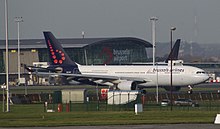
ブリュッセル空港 (BRU IATA)、それが主に位置する町のためにザヴェンテムとしても知られている、ベルギーの主要空港です。ブリュッセル本土ではなく、周辺にあります フランダース。空港は国営航空会社の拠点です ブリュッセル航空。他のフルサービス航空会社はBRU、および次のような格安航空会社を使用しています ライアンエアー, ブエリング そして JetairFly.
電車があります(€5.10)ブリュッセル中心部まで15分ごとに25分かかり、そのうちのいくつかは ゲント, モンス, ニヴェル、および 西フランダース バス路線番号12と21(€3 自動販売機で/€5 船上)リュクサンブール広場(欧州議会地区)まで20〜30分ごと。バスは、中心部に向かう途中でNATOとシューマン(EU機関の場合)に停車します。また、1時間に2本の列車があります ルーヴェン、13分かかります。ブリュッセルの中心部へのタクシーの料金は約 €35 -事前に予約すれば安くなります。タクシーブレウス:32 2 268–0000、タクシーオートラックス:32 2 411–4142、タクシー頂点:32 2 349–4949。
ブリュッセルサウスシャルルロワ空港 (CRL IATA)、ブリュッセルの南約50 km(31マイル)にあり、主に次のような格安航空会社にサービスを提供しています。 ライアンエアー そして ウィズエアー。コーチでブリュッセル南駅まで約1時間で行くことができます(€13 一方通行、 €22 戻る)。ベルギーの他の地域に行く場合は、空港外のTEC自動販売機からシャルルロワシュッド駅経由の複合バス列車のチケットを購入してください。 €19.40 一方通行。
しかし、本当に行き詰まっている場合は、タクシーの運転手がクレジットカードを使うのは珍しいことではありません。ブリュッセルへのタクシーの料金は定額です(約 €85 2020年1月現在)、タクシーの運転手がクレジットカードを受け入れるかどうかを確認できます。
アントワープ空港 (ANR IATA)を含むいくつかのビジネスフライトがあります シティジェットロンドンシティ空港へのリーズナブルな価格のリンク。他の空港にはオーステンデ、リエージュ、コルトレイクがありますが、それらは貨物とチャーター便のみを扱います。
近隣諸国の空港、特にアムステルダムへのフライトは検討する価値があるかもしれません スキポール空港 に直接レールリンクがあります ブリュッセル、またで停止します アントワープ そして メッヘレン.
リエージュ空港 (LGG IATA)はリエージュ市の近くにあります。によってのみ提供される小さな空港 TUIFly、格安航空会社。それは主にスペインから、時にはギリシャとモロッコへと毎日5-10の間あります。リエージュ市への交通手段は非常に貧弱です。1日に数回運行している57番のバスがあり、リエージュギユミンの駅に行きます。このバスは、平日のみ運行しています。もう1つのオプションは、53番または85番のバスに乗ることです。バスは、空港を経由して市内中心部に行くこともあります。 30分。 TECバスはリエージュ空港の特別価格はなく、料金がかかります €3.50 一人当たり。
タクシーの料金は €25.
電車で
ブリュッセルと以下の間には直通列車があります。
- ルクセンブルク (通常の列車、1時間ごとに運行)。ルクセンブルクのすべての公共交通機関は無料です。ルクセンブルクからブリュッセルまでは約2時間30分、ルクセンブルクからリエージュまでは3時間かかります。
- パリ, ケルン, アーヘン, ロッテルダム, アムステルダム (タリス )
- リヨン、ボルドー、パリ-CDG空港および他の多くのフランスの都市(TGVは SNCF).
- ロンドン, エブスフリート, アシュフォード, リール, カレー、ロッテルダム、アムステルダム(ユーロスター)。別のベルギーの都市に行く場合、「任意のベルギー駅」チケット(2等車で片道5.50ポンド)には、ユーロスターのチケットに地元の交通機関が含まれています。距離によっては、別のチケットを入手するよりも安くなる場合があります。英国からベルギーに旅行する乗客は、ベルギーに到着するときではなく、搭乗する前に英国でフランスのパスポート/身分証明書のチェック(ベルギー人に代わって行われます)を通過します。リール/カレーからブリュッセルに旅行する乗客はシェンゲン圏にいます。
- フランクフルト、ケルン(ICEが運営 ドイツ鉄道)
- チューリッヒ、スイス、ルクセンブルグ経由(普通列車、1日2本)
ブリュッセルからアントワープを経由してオランダのロッテルダムとアムステルダムまで、1時間ごとに都市間列車があります。都市間サービスは、ブリュッセルからメッヘレン、アントワープ、ロッテルダム、ハーグ、スキポールを経由してアムステルダムまで運行しています。アムステルダムへのもう1つの直接接続は、高価なタリスです(リーズナブルな運賃で事前に予約してください)。別の方法は、ブリュッセルまたはアントワープからロッテルダムとアムステルダムへの都市間列車の接続が可能なルーセンダール(NL)への列車に乗ることです。オランダからベルギーに旅行する乗客は、NSインターナショナルデスクまたは ウェブサイト 国内電車の切符を販売しているものとは異なります。 NSインターナショナルはまた、タリスのウェブサイトで見られるのと同じ価格でタリスのチケットを販売しています。
国際列車はブリュッセルのGaredu Midi / Zuidstationで国内列車に接続し、すべてのユーロスターまたはICEと一部のタリスチケットを使用して、国内列車で無料で旅を終えることができます。すべての高速列車について、オンラインまたは旅行代理店を使用して、格安運賃を事前に予約する必要があります。定期的に予定されている寝台列車はもうありません。
リールへのTGV接続も確認することをお勧めします。フランスの他の地域からリールへの列車はより頻繁で、通常は安いです。リールフランドルからゲントとアントワープへの直通列車があります。 TGVがリールヨーロッパに到着した場合、リールフランドル駅まで徒歩15分です。
であなたの旅行を計画する ドイツ鉄道の時刻表。それはヨーロッパ中のすべての国内および国際的なつながりを持っています。
ベルギーの電車内は禁煙です。
ベルギー国内を旅行する乗客65の列車運賃は、多くの場合、上限があります。 €6 当日帰りの場合も有効ですが、このような運賃では09:00以降にのみ旅行が必要になる場合があります。
車で
E19、E17、E40、E411、E313などの主要なヨーロッパの高速道路がベルギーを通過します。
相乗り
ベルギーに行く最も安い方法(€3/ 100 km(62 mi))ヨーロッパのどこからでも-少し柔軟で運が良ければ-通常は タクシーストップ。多くの乗り物も提供されています BlablaCar.
バスで
あなたはヨーロッパ中からベルギーに行くことができます ユーロラインズ コーチ。国際バスは途中降機があります アントワープ, ブリュッセル北駅, ルーヴェン & リエージュ.
ボスニアのディアスポラにサービスを提供しているバス会社があります。 掃除 ヨーロッパ大陸の反対側に行く方法。 セミツアー のさまざまな目的地から週に3回実行されます ボスニア・ヘルツェゴビナ ベルギーとオランダへ、オフシーズンについて €132 帰りのチケット。
船で
イギリスのハルからゼーブルッヘへ/からの夜間フェリーがありますが、安くはありません。

フランスから
- で終わる国内のベルギーの列車があります リール (駅 リールフランダース).
- ベルギー国鉄のデパンネターミナル(および海岸トラム– Kusttram)とフランスの沿岸都市ダンケルクには、DK'BUSMarineが運行するバス路線があります。 [1]。国境の可能な限り近い距離に行くDK'BUSバスに乗って、ビーチを歩いて、次のようなコーストトラムの便利な駅に到着することによってそれを歩くことも可能です。 遊歩道.
ドイツから
- あなたはの鉄道駅間でバスに乗ることができます ユーペン (ベルギー)と アーヘン (ドイツ)これは、国際列車の切符で同じ旅行をするよりもかなり速くて安価です。
- ベルギーの目的地が国境からさらに離れている場合は、からローカル列車に乗ることができます アーヘン に ウェルカンラト その後、オイペンとオイペンを結ぶインターシティ列車に乗り換えます。 オーステンデ、 通りかかっ ルーヴェン, ブリュッセル, ゲント そして ブルージュ。アーヘンからブリュッセルへの旅行は2時間未満かかります。
オランダから
- ベルギーとオランダ間の国境を越えるバスのリストについては、次のリストを参照してください。 [2].
- 古代ヨーロッパの歴史の独特の結果であることに加えて、 バール (正式には バールレヘルトグ ベルギーと バールレナッサウ オランダの)は、町の主要バス停があるため、変更点となる可能性があります Sint-Janstraat フランダース(ベルギー)とオランダの両方のバスで運行されています。
- フランダース(ベルギー)の会社De Lijnは、国境を越えるバスを運行しています。 トゥルンハウト ベルギーと ティルブルフ オランダでは、どちらもそれぞれの国の鉄道網の終端です。
- フランダース(ベルギー)の会社De Lijnが運行するバス(45号線)が ヘンク (ベルギー)と マーストリヒト (オランダ)。から出発する別のバス(ライン20A)があります ハッセルト、に行く マーストリヒト。列車の接続が構築されています。
移動する
このような小さな国(最大距離は300 km)なので、数時間でどこにでも行くことができます。公共交通機関は、完全に機能している場合、高速で快適であり、それほど高価ではありません。大都市の間では、列車の接続が頻繁にあり、バスはより短い距離をカバーしています。便利なサイトは スマートモビリティプランナー、全国のドアツードアのルートプランナーがあり、あらゆる形態の公共交通機関(電車、バス、地下鉄、路面電車を含む)をカバーしています。
地図を見ると、ブリュッセルが日帰り旅行でアントワープ、ゲント、ブルージュ、ナミュール、ルーヴェンを探索するのに良い出発点であることがわかります。アントワープはコスモポリタンな場所になりたい人に人気があり、ゲントはオープンマインドな地方主義の良い組み合わせが好きな人のトップです。リエージュは美しいですが、ドイツに近すぎて日帰り旅行の拠点としては適していません。メッヘレンは観光客には退屈だと考えられていますが、駅の隣には非常に優れたユースホステルがあり、30分ごとに他の場所への電車があります。
特にフランダースで地元の観光をするために、サイクリングのための多くのインフラストラクチャが利用可能です。バイクは事実上どこでも借りることができます。ワロンの田園地帯ではマウンテンバイクが利用でき、ルクセンブルクとの国境沿いではラフティングが人気です。
電車で
.jpg/220px-Brussel-Zuid_-_Bruxelles-Midi_(13202693323).jpg)
- Belgiantrain.beジャーニープランナー. ベルギー国鉄が運営する公式の旅行プランナーを使用して、列車の旅程と料金を確認してください
ベルギーのほとんどは電車でよく接続されており、 NMBS (フランス語でSNCB)主要ルートのほとんどは、アントワープ、ナミュール、またはブリュッセルを通過します。ここから国際列車に到着します。どちらもブリュッセル空港から電車で、またはアントワープ空港またはシャルルロワ空港からバスで行くことができます。転送は非常に簡単です。すべてのICEと一部のタリスチケットで許可されています 当日無料送迎 他のベルギーの駅への国内列車で。また、パリからゲント、ブルージュ、オステンデに直接向かうタリスの列車があり、アントワープやブリュッセルで列車を切り替える必要はありません。ロンドンから(ユーロスターで)アントワープ、ルーヴェン、ゲントにブリュッセルで乗り換える必要がありますが、ブルージュでは、ブリュッセルを経由して迂回する必要なしに、リール(フランス)に乗り換えることができます。リールとブリュッセルでは、スタッフはとても親切で、喜んで笑顔になります。
列車は時間厳守で、ほとんどが近代的で快適です。
ベルギーの列車の通常の運賃は、ドイツや英国に比べて安く、予約する必要も可能性もありません。二等運賃はそれより高くなることはありません €21.30 国内最長の旅行(片道)。ファーストクラスは50%の追加料金がかかります。ラッシュアワーは電車が満員になることがあるので、その時間帯に座席を確保するにはファーストクラスのチケットが必要になる場合があります。駅では現金またはクレジットカードでお支払いいただけます。週末の帰りのチケットは50%安いです。
ほとんどのチケットは指定された日に指定されたルートで販売されているので、チケットの日にどの電車にも乗ることができます。電車に乗るときの追加の検証はありません。
SNCB / NMBS経由でルートを計画できます ウェブサイト, アプリ (英語で利用可能で、遅延とキャンセルに関するリアルタイムの情報を提供します)または駅のスタッフに尋ねることによって。
あなたは経由でチケットを購入することができます ウェブサイト, アプリ、自動販売機、切符売り場、電車内。電車の中で切符を購入したい場合は、車掌に警告する必要があります。電車の中でチケットを購入するのは避けてください。追加料金を支払う必要があります。 €7 チケットごと。多くの小さな駅にはもうチケットカウンターがありません、そしてあるとしても、それらはあまり頻繁に開いていません。すべての駅に、少なくとも1台の自動販売機があります。切符売り場が閉まっていて自動販売機が動かない場合、車掌に問題を解決すれば、列車に追加料金はかかりません。
現金とクレジットカードでお支払いいただけます。ウェブサイトまたはアプリからPayPalで支払うこともできます。非接触型決済は、ほとんどの駅と一部の自動販売機で受け付けています。自動販売機での現金の支払いについては、硬貨のみが許可され、紙幣は許可されません。チケットを購入しないと、最高で罰金が科せられる可能性があります €225.
複数の列車の旅を計画している場合の安価なオプションは パスに行く[3] 26歳未満の旅行者向け。これにより、2回目のクラス旅行が10回(必要に応じて列車の乗り換えを含む)提供されます。 €53。 1年間有効で、他の人と共有したり、他の人に制限なく与えることができます。 26歳以上の場合は、 鉄道パス。この費用 €83 セカンドクラスまたは €128 1日。これらのパスを使用するときは、電車に乗る前に手で空の行を埋めていることを確認してください。パスが正しく記入されていないと、車掌は非常にうるさいことがあります。ただし、乗車前に駅のスタッフに連絡すれば、喜んでお手伝いします。プラットフォーム上の他の人に、ペンを持っていないときにペンを使用するように依頼することも一般的な方法です。
ベルギーの学校の休暇中に旅行する場合、26歳未満の人にとって最も安いオプションは、 無制限に行く のために渡す €15 週あたりまたは €25 月(7月と8月のみ)。このパスを使用すると、任意の(国内)ルートで2等車のNMBS / SNCB列車に乗り降りできます。このパスには、個人用のMoBIBカードが必要です。あなたはこれを買うことができます €5、有人チケット売り場でのみ。学校の休みは、夏休み(7月と8月の2ヶ月)、秋の休憩(11月1日の週)、クリスマス休憩(クリスマスと新年の両方を含む2週間)、春休み(2月末の1週間)です。 -3月の初め)、イースター休憩(イースターの周りの2週間)。過去2回の休日の正確な日付は、毎年異なります。
特定のイベントやコンサートに行く場合は、電車の旅がまだチケットに含まれていないかどうかを確認してください。 Rock Werchter、Pukkelpop、I Love Technoなどのいくつかの主要なフェスティバルやコンサートでは、チケット価格に列車の旅が含まれています。テーマパークや美術館などの特別な場所を訪れる場合は、オプションについてお知らせください。B-エクスカーション'。そうすれば、駅で入場券と電車の切符を1枚で購入できます。これは常に低価格であり、通常は通常の入場券の価格に加えて €4-5 旅行のための。デスクエージェントがきっと詳細を教えてくれます。
IC列車(InterCity)、L列車(ローカル、すべての駅に停車)、P列車(ラッシュアワーの追加列車)、 Sトレイン (大都市の郊外にサービスを提供します)。観光客のために、 ICトレイン またはICT列車(観光列車)は、より速く、より頻繁で、より快適であるため、最良の選択肢です。目的地にICトレインが運行されていない場合にのみ、LトレインとSトレインを使用する必要があります。ただし、ラッシュアワーを除いて、LトレインとSトレインは混雑が少ない傾向があります。 Sトレインは、主に近隣地域の通勤者を対象としていますが、一部の市内旅行にも使用できます。例として、ゲント-ブルージュの旅は、ICトレインで25分、Lトレインで42分かかりますが、料金は同じです。
列車のスケジュールは通常12月10日頃に変更されます。これらの変更は通常、いくつかの新しい駅の導入といくつかの定期路線の追加に限定されています。非常に長い間、ラインが廃止されたことはありません。ここで、あなたは見つけることができます ベルギーの鉄道と駅の地図.
バスと路面電車で
バスは、大都市の路面電車や地下鉄に加えて、全国をカバーしています。ほとんどのルートは短距離をカバーしていますが、バスで都市から都市へ行くことも可能です。ただし、これは電車に乗るよりもはるかに遅く、わずかに安いだけです。 Kusttramもあります [4]、フランスからオランダまでのフランダースの海辺のほぼ全体に沿って走っています。夏には間違いなく一見の価値があります。
都市内では、1つのゾーンの通常のチケットは決してそれ以上の費用はかかりません €2、および利用可能なさまざまなトラベルカードがあります。地元の交通機関はさまざまな会社によって提供されています:ブリュッセルのSTIB / MIVB [5], De Lijn フランダースと TEC ワロンでは、そしてブリュッセルの外では、彼らはお互いのチケットを受け入れません。券売機で買うと切符が安くなります。
ほとんどの観光客はバス会社を必要としません。都市間を電車で行き、市内を歩いて行く方がはるかに使いやすいからです。地下鉄を持っているのはブリュッセルとアントワープだけですが、そこでも徒歩で歩き回ることができます。ブリュッセルの歴史的中心部は、長さがわずか約300 m(980フィート)×400 m(1,300フィート)です。アントワープははるかに大きいですが、馬に引っ張られたコーチに乗ると、地下鉄よりも眺めが良くなります。
車で

ベルギーには、最新の無料高速道路の密集したネットワークがありますが、ワロン地域の一部の二次道路は整備が不十分です。標識は、以下を除いて、常に現地の言語のみで表示されます。 ブリュッセル、バイリンガルです。ベルギーの多くの都市はオランダ語とフランス語でまったく異なる名前を持っているため、これは混乱を引き起こす可能性があります。例えば、 モンス フランス語で ベルゲン オランダ語; アントワープ と呼ばれる アントワープ オランダ語と アントワープ フランス語で; リエージュ フランス語で ルイク オランダ語と リエージュ ドイツ語など。これはベルギー以外の都市にも当てはまります。フランダースの高速道路に沿って運転すると、 リール、のフランスの都市です リール または アーヘン、ドイツの都市です アーヘン。出口は単語でマークされています Uit (アウト)フランダース地域では、 出撃 ワロン地域と Ausfahrt ドイツ語を話すもので。
ベルギーのドライバーは、「右からの優先順位」のルールにも注意する必要があります。横断歩道では、標識や路面標示で特に示されていない限り、右側からの交通には通行権があります。あなたは都市部と郊外でそのような交差点に遭遇する可能性が最も高いです。注意深い訪問者は、右側にへこみがある車がたくさんあることに気付くでしょう!防御的に運転すれば、あなたの車は同じ運命を回避します。
ベルギーでは、特に二次道路では、高速道路の標識が不便であることがよく知られています。レイアウトと色に統一性はありません。多くは悪い状態にあるか、厄介な位置に置かれているか、単に行方不明です。優れたロードマップ(ミシュラン、デルーク、フォーク)またはGPSシステムをお勧めします。ベルギーは、主要ルートでヨーロッパのE番号のみを使用する数少ない国の1つです。
高速道路や二次道路の固定速度カメラだけでなく、主要都市周辺の高速道路を何マイルも走る平均速度カメラもあります。
レンタカー
一部のレンタカーには衛星ナビゲーションが装備されていますが、車を予約するときにこれをリクエストすることをお勧めします。ベルギーでAからBに移動するのにおそらく最も信頼できる方法です。このようにして、ベルギーのいくつかの場所を平らに見ることができますが、町の建築は称賛に値するものです。ベルギーの町や村がどれほどきれいであるかに驚くでしょう。午後にドライブスルーすると、家の前の通りを気遣う人々が見られます。これは、本物の、時代遅れの村のコミュニティの雰囲気です。
スピードトラップは道路に沿って頻繁に配置され、少量の飲酒運転には次のような重大な罰則が伴います。 €125 その場で0.05%と0.08%の罰金が科せられます。システム内のアルコールの量を超えると、最大6か月の懲役と5年間の運転免許証の喪失に直面します。
親指で
ヒッチハイカーに最適な場所。リフトを頼むだけ!町の名前が書かれた段ボールの看板があると、すぐに持ち上げることができます。
- ブリュッセルを出発する:南に向かうと(例:ナミュール)、「デルタ」という名前の地下鉄駅に着きます。
その隣には巨大な「パークアンドライド」とバス停があります。バス停の近くでヒッチハイクをすると、交通時間中は5分以内で乗車できます。
- ゲント/ブルージュに向かう:Berchem-ste-Agatheの「Basilix」と呼ばれるショッピングモールの近くの良い場所。あなたはバスN°87でこの場所に到達することができます。
北に行く別の場所は、病院エラスメ/エラスムス(メトロステーションエラスメ/エラスムス)の近くのアンデルレヒトにあります。
- リエージュ/ハッセルトに向かう:プレメトロでスハールベークの「ディアマント」駅まで行きます。駅を出ると、すぐ下にたくさんの出て行く車が見えるはずです。歩いて、「E40」と書かれた道路標識に従ってください。 You should arrive in a small street giving access to a road joigning the E40 (the cars are leaving a tunnel at this point). Just hitchhike on the emergency lane at this point, in the portion near the tunnel. Cars should still be riding slowly at this point and see you are visible to them, so it's not that dangerous.
- Leaving Louvain-la-Neuve (University) to Brussels (north) or to Namur (south), stand at the roundabout next to exit/entrance "8a" near to "Louvain la Neuve-centre" road signs. Quick lift guaranteed. Avoid exit 7 or 9, since they have far less traffic.
見る

Mostly known for its key role in European Union administration, the small nation of Belgium might leave you surprised by its rich and gorgeous heritage. It boasts a number of fascinatingly historic cities packed with medieval and Art Nouveau architecture and famous for their long traditions in arts, fashion and fine dining. If you've seen the best of them, the Belgian countryside offers anything from sandy beaches to the densely forested hills and ridges of the Ardennes.
Brussels, the country's vibrant capital, is a modern world city with a highly international character. It combines massive post-modern buildings in its European Quarter with impressive historic monuments, such as the World Heritage listed Grand Place, surrounded by guildhouses and the Gothic town hall。 There's Laken Castle and the large St. Michael and St. Gudula Cathedral, dedicated to the cities patron saints.ザ・ Royal Palace is a more recent but no less grand structure. One of the city's most famous landmarks is the Atomium, a remarkable steel structure and remnant of the 1958 World's Fair. And yet, with all those magnificent sights at hand, many travellers' favourite is a tiny bronze fountain in the shape of a peeing boy: the curious Manneken Pis。ザ・ Walloon Brabant province, a few kilometres south of Brussels, is certainly worth a visit. There you can visit the Lion's Mound in Waterloo or the beautiful Villers Abbey in Villers-la-Ville.

Perhaps the most popular of the Belgian cities is Bruges。 Much of the excellent architecture that arose during the towns Golden Age, roughly the 14th century, remains intact and the old centre is a valued ユネスコ世界遺産。 Among its most prominent landmarks is the 13th century belfry, where the carillonneur still rings the bells on a daily basis. With countless other noteworthy monuments, Bruges is a highly popular destination and get a bit overcrowded during holidays. And then there's Ghent, which in ages past was one of the wealthiest cities in northern Europe. Although larger and much busier than Bruges, its excellent medieval architecture can definitely compete. Its beguinages, belfry and former cloth hall are World Heritage Sites. Or visit Antwerp, the country's current place to be as it is a hotspot of the Belgian fashion, clubbing, arts and diamonds scenes. Nevertheless, the city's timeless old centre is right up there with the others, boasting the countries most stunning cathedrals。 Other pleasant cities with good sights include Leuven, with the oldest Catholic University still in use and Liège.
In Wallonia, don't miss the city of Mons which has been the Cultural Capital of Wallonia since 2002. In 2015 the city had the honour of being the Cultural Capital of Europe. Mons is the largest and most important city in the Province of Hainaut, of which it is the administrative and judicial centre. One of its primary aims, however, has been to safeguard its heritage to better share it with the growing numbers of tourists to the area. Three major masterpieces, the Belfry, the Neolithic flint mines at Spiennes and the Doudou, all of which have been added to UNESCO's World Heritage List, can be found in and around Mons.
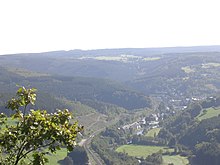
For hiking, biking and camping, head to the rugged hills of the Ardennes with their tight forests, caves and cliffs。 They are home to wild boar, deer and lynx and hide a number of friendly villages, lots of castles and a few other notable sights. The impressive caves of Han-sur-Lesse、 castle of Bouillon and the modern Labyrinth of Barvaux are some of the best picks. The city of Namur makes a great base from where to explore the Ardennes and has some fine sights itself too. The city is beautifully located along the rivers Meuse and Sambre and from the ancient citadel you'll have a great view over town.
The Belgians brought forward a good number of world famous masters of art, and their love for arts is still today reflected in the range of fine arts museums.ザ・ Musées Royaux des Beaux-Arts in Brussels and the Koninklijk Museum voor Schone Kunsten in Antwerp are just a few excellent examples. However, the Belgians love museums, with over 80 of them in the capital alone. Besides arts, they display anything from history and folklore to industry and technology. As some of the worst fighting of both World Wars took place on Belgian territory, there's also a large number of memorials and museums dedicated to those dark times, along some humbling military cemeteries.
行う
- Mons International Love Film Festival: yearly festival of cinema (February)
- Ritual Ducasse of Mons: Doudou is the popular name for a week of collective jubilation that takes place in Mons on the weekend of the Trinity each year. There are four key moments: The Descent of the Shrine, The Procession, The Ascent of the Car d’Or and The Battle called Lumeçon (Trinity Sunday).
- Ethias Tennis Trophy: one of the better matches in the world. (October / Mons)
- Ommegang: a parade in Brussels that celebrates the beginning of the reign of Charles V of Habsburg. It takes place on the stunning cityscape of the Grand Place and involves thousands of stunts in period costume.
- Zinnekeparade: the yearly celebration of the Brusseler's spirit - the theme changes each year and involves costumes & chariots made by volunteers and locals.
- DOCVILLE - International Documentary Film Festival, Naamsestraat 96, 3000 Leuven, ☏ 32-16-320300. International Documentary Film Festival in the beginning of May, with national and international competition in the city of Leuven. Selected films have a focus on cinematography. €4.50-6.
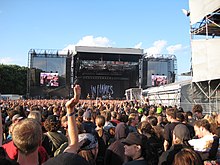
- Graspop Metal Meeting. Yearly heavy metal festival held in the town of Dessel, in June.

- . Three days in February the town of Binche is transported back to the 16th century for one of the most fantastic festivals of the year. Highlighted by music parades and fireworks, the climax of this event is when the Gilles appear on the Grand Place and throw oranges to the spectators. This infamous festivity has been classified as part of the world's cultural heritage by UNESCO along with its renowned Gilles.
- Rock Werchter. End of June, beginning of July, Werchter.
- Dour festival. "European Alternative Music Event" - 12–15 July 2007 - Dour.
- Pukkelpop. Mid- August
- Atomium built for the 1958 Brussels World Fair (Expo ’58), it is a 102 metre tall representation of an atomic unit cell. More precisely, it is symbolic of a unit cell of an iron crystal magnified 165 billion times. Nine steel spheres 16m in diameter connect via tubes with escalators 32 m long.
- Gentse Feesten. 2nd half of July. Huge, ten day long street festival in the historical centre of the city of Ghent. The biggest street festival in Europe, with theatre, music in all genres, techno parties, and so on - Gentse Feesten
- Activiteiten Gent & Antwerpen, Rerum Novarumlaan 132 (Merksem), ☏ 32 475 696 880. Great boat tours around Ghent and Antwerp.
- 24 hours cycling, Louvain-La-Neuve Louvain-La-Neuve is in the Wallonia not far from Brussel, it's a small pedestrian city created in the 60s for the French-speakers students. Every year, in October, they organised a bicycle competition. Actually, the course is a pretext to enjoy the event... And to drink beers. This party is one of the most important consumption of beers of the whole Europe.
- Belgian Beer Tour Belgian Beer Tour is a tour operator specialising in tours of Belgium breweries. It offers a great way for beer lovers to visit their favourite breweries and discover new ones. The tours cover a wide range of beers and appeals to connoisseurs and amateurs alike.
- International Short Film Festival Leuven, Naamsestraat 96, 3000 Leuven, ☏ 32-16-320300. International Short Film Festival with many foreign guests and directors. Focus on the best Flemish and European short films. €4.50-6.
- TomorrowLand, De Schorre, Boom.
- Flowercorso Loenhout, Loenhout Centre. one of the largest flower corsos of Belgium. With the title of Royal Corso their theme cars and floats are totally covered with over flowers and go up to 80 feet length. Every year, start of September €2-8.

トーク
Belgium has three official languages at the federal level: Dutch, French そして ドイツ人。 However, one will quickly notice that the Belgian versions of these languages possess a few idiosyncrasies:
- Flemish Dutch is not always easy to understand for other Dutch-speakers. Flemings tend to sound more formal than the Dutch, and certain vowels may be pronounced differently, often in a way that sound like British English. Flemish Dutch is also a lot less "guttural" than its northern counterpart.
- The French spoken in Belgium, whilst marked by distinct annunciations and intonations, is mostly intelligible to the average French person, and younger generations in urban areas like Brussels tend to speak with a relatively standard French accent. Nevertheless, some "rural" accents can come off as harsh to the casual listener (especially those around Charleroi and near the German border). Walloon French also incorporates rather archaic sayings and idioms, and Anglicized words are used more profusely than in France or Quebec.
- The German spoken in Belgium is nearly identical to Hochdeutsch (standard German) but, not unlike Walloon French, incorporates antiquated sayings. German-speaking Belgians also speak a lot more slowly than Germans.
Although Belgium has three official languages, that does not mean that all of them are official everywhere. The official language of Flanders is Dutch and the official language of Wallonia is French. Brussels' official languages are Dutch and French (though French is more commonly spoken) and German is the official language in nine municipalities in Wallonia (Eupen and its surroundings).
Virtually all Flemish people are bilingual in both Dutch and French, whereas the Walloons are typically monolingual and don't speak any Dutch. Even though German is an official language, less than 1% of the population understands it fluently and you're unlikely to find speakers of the language outside the German-speaking community.
English is widely spoken by the younger generations in the Dutch-speaking areas and Brussels. In contrast, English is not as widely spoken in the French-speaking areas, though it is still possible to find English speakers. English may not be understood by the oldest of Belgians.
It's important to note that language is a highly sensitive issue in Belgium, and there's no place in Europe other than Belgium where you can get into trouble for using the "wrong language". Refer to the section on '尊敬' for more.
A very small number of inhabitants of Wallonia, particularly the older generations, still speak the Walloon language. This language, while not official, is recognized by the French Community of Belgium as an "indigenous regional language", together with a number of other Romance (Champenois, Lorrain and Picard) and Germanic (Luxembourgian) language varieties. On the flipside, Italian is rather commonplace in Wallonia due to immigration. (At least 10% of Walloons can trace their origins back to Italy.)
Due to its international status, Brussels is home to a myriad of other languages; in addition to English being widespread, it is possible to find people who speak Italian, Spanish, Portuguese, Russian, Arabic, etc.
In Belgium, foreign films and TV shows are available in their original language with French and Dutch subtitles in Flanders and Brussels cinemas and in the Dutch-language TV channels. Only children's TV shows and movies are dubbed.
In Wallonia, all movies and TV shows have a dubbed version in French or German and selected foreign films/TV shows have an original language version (marked with a "VO" in the cinema listing or in the case of TV shows, can be accessed through the remote control).
購入
お金
Exchange rates for euros As of 04 January 2021:
為替レートは変動します。これらの通貨およびその他の通貨の現在のレートは、 XE.com |
Belgium uses the euro, like several other European countries。 One euro is divided into 100 cents. The official symbol for the euro is €, and its ISO code is EUR. There is no official symbol for the cent.
All banknotes and coins of this common currency are legal tender within all the countries, except that low-denomination coins (one and two cent) are phased out in some of them. The banknotes look the same across countries, while coins have a standard common design on the reverse, expressing the value, and a national country-specific design on the obverse. The obverse is also used for different designs of commemorative coins. The design of the obverse does not affect the use of the coin.
チップ
Tipping in Belgium is not usually done as service charge is always included. However, you may tip as a sign of appreciation. Usually, this is done by paying in bank notes with a total value slightly higher than the price of the meal and telling the waiter/waitress that they can keep the change.
Items
- Belgian chocolate: A long tradition has given Belgian chocolate a superior refinement process that is recognized worldwide.
- Laces in Bruges
- Designer fashions in Antwerp
- Jewelry in one of Antwerps many jewelry shops
- ビール
- Belgian comic books and related merchandising, especially in Brussels
食べる

Belgians like to eat. Belgium is famous for its good cuisine and people like to go to restaurants frequently. Best description for Belgian food would be "French food in German quantities".
General rules
- As anywhere else in the world, avoid the tourist traps, where the touts are trying to get you in the restaurants. You will get average to bad quality food for average to high prices, and, at busy times, they will try to get rid of you as soon as possible to make space for the next customer. A good example of this is the famous "Rue des Bouchers/Beenhouwersstraat" in Brussels in this picture.
- Belgium is a country that understands what eating is all about and can be a real gastronomic paradise. You can have a decent meal in about every tavern, from small snacks to a complete dinner. Just pop into one of those and enjoy it.
- If you want to eat really well for not too much money, ask the local people or the hotel manager (that is, supposing he does not have a brother restaurant-manager) to give some advice for a good restaurant. Not a bad idea is to find a restaurant or tavern a little bit outside of the cities (if advised by some locals) they are usually not too expensive but deliver decent to high quality food. And ordering the specialties during the season will be both beneficial for your wallet and the quality of the food.
- Quality has its price: since the introduction of the euro, price for eating out in Belgium nearly doubled. Expensive food like lobster or turbot will always cost a lot of money at any restaurant. But you can also find some local and simple dishes, rather cheap and still very tasty (such as sausages, potatoes and spinach). Normally a dinner (3 dishes) will be around €30-50 depending your choices of food and restaurant. And for cheap, greasy food, just find a local frituur, also called a frietkot または friterie, it will be the best Belgian Fries you'll have had in ages. However, when you are in such a frituur, it may be best to avoid snacks (other than the fries themselves, and the rich choice in sauces that comes with them), which are generally fried and made out of low-quality scrap meat. Do NOT order a cheeseburger or hamburger in such a place! The so-called burger which you would get if you do, is especially notorious for being fried and containing a mixture of low-quality meat.
Specialities


A number of dishes are considered distinctly Belgian specialities and should be on every visitor's agenda.
Mussels are a firm favorite and a side-dish of Moules et frites/Mosselen met friet (Mussels with French fries). The traditional way is to cook them in a pot with white wine and/or onions and celery, then eat them up using only a mussel shell to scoop them out. The top season is September to April, and as with all other shellfish, do not eat the closed ones. Belgium's mussels always come from the nearby Netherlands. Imports from other countries are looked down on.
Balletjes/Boulettes are meatballs with fries. They will either be served with a tomato sauce or with the sauce from Liège, which is based on a local syrup. For this reason they will often be introduced as Boulets Liégeois.
Frikadellen met krieken are also meatballs, served with cherries in a sauce of cherryjuice. This is eaten with bread.
Stoemp is mashed potatoes and carrots with bacon and sausages. It is a typical meal from Brussels.
Stoofvlees (or Carbonade flamande) is a traditional beef stew and is usually served with (you have guessed it already) fries.
Witloof met kaassaus/Chicons au gratin is a traditional gratin of chicory with ham and a cheesy bechamel sauce, usually served with mashed potatoes or croquettes.
Konijn met pruimen: rabbit cooked in beer and dried plums.
Despite the name, French fries (frieten in Dutch, frites in French) are proudly claimed as a Belgian invention. Whether or not this is true, they certainly have perfected it — although not everybody agrees with their choice of mayonnaise over ketchup as the preferred condiment (ketchup is often considered to be "for kids").
Every village has at least one frituur/friterie, an establishment selling cheap take-away fries, with a huge choice of sauces and fried meat to go with them. The traditional thing to try is friet met stoofvlees, but remember the mayonnaise on it .
Waffles (wafels in Dutch, gaufres in French) come in two types:
- Gaufres de Bruxelles/Brusselse wafels: a light and airy variety.
- a heavier variety with a gooey center known as Gaufres de Liège/Luikse wafels.
The latter are often eaten as a street/ take-away snack while shopping and therefore can be found at stands on the streets of the cities.
Last but not least, Belgian chocolate is famed around the world. Famous chocolatiers include Godiva, Leonidas, Guylian, Galler, Marcolini and Neuhaus, with Godiva, Leonidas and Neuhaus being official suppliers of chocolate to the Belgian royal family. In nearly all supermarkets, you can buy the brand Côte d'Or, generally considered the best 'everyday' chocolate (for breakfast or break) among Belgians.
International
As a small country in the centre of western Europe, the cuisine is influenced not only by the surrounding countries but also by many other countries. This is also emphasized by many foreigners coming to this country to make a living here, for instance by starting a restaurant. You can find all types of restaurants:
- French/Belgian: A traditional Belgian restaurant serves the kind of food you will also find in the best French restaurants. Of course there are local differences: at the coast (in France as well as in Belgium) you have a better chance to find some good seafood, like mussels, turbot, sole or the famous North Sea shrimp. In the southern woods of the Ardennes (remember the battle of the Bulge?), you are better off choosing game or local fish like trout.
- English/Irish: There are Irish bars and pubs everywhere and Belgium is no exception, try the Schuman area of Brussels for more Irish pubs than you can shake a stick at. There is also an English pub just off of Place de la Monnaie in central Brussels.
- American: There are McDonald's or lookalikes in most towns. The Belgian variety is called "Quick". You may also find a local booth serving sausages, hot dogs or hamburgers. Try it: the meat tastes the same, but the bread is much better. Ketchup in this region is made with less sugar (even the Heinz brand). Pizza Hut, Domino's, and Subway also have establishments, but you won't find Burger King. There are no real American restaurants, although there is an American bar on the Toison d'Or in Brussels that serves food.
- Italian: Roughly 500,000 people in Belgium are Italian or have Italian heritage, and ties have been historically close between Belgium and Italy, so finding a tasty pizza or mouth-watering pastas is not difficult, especially in Brussels and Wallonia.
- Mexican: Only in the cities and rather costly for only medium quality. ChiChi's (near Bourse) serves Mexican American food but would not be considered a good value by American standards. ChiChi's uses reconstituted meats.
- Chinese: They have a long tradition of restaurants in Belgium. Rather cheap, but an acceptable quality.
- German/Austrian: Maxburg in the Schuman area (next to Spicy Grill) makes a good schnitzel.
- Greek/Spanish/Italian: Like all over the world, nice, rather cheap, with a good atmosphere and typical music (Greek: Choose meat, especially lamb) (Spanish: Choose paella and tapas) (Italian: Choose anything).
- Japanese/Thai: You usually find them only in the cities and they are rather expensive, but they give you great quality. The prices and the quality are both satisfying in a concentrated cluster of Thai restaurants near Bourse station. Avoid Phat Thai though if you don't want disruptions - as they let pan handlers and flower pushers enter and carry out their "work".
- Arabic/Moroccan: Rather cheap, with a great variety of local dishes, especially with lamb; no fish or pork or beef.
- Turkish: Rather cheap, with a great variety of local dishes, especially with chicken and lamb and also vegetarian dishes, dishes with fish are rare; no pork or beef.
- Belgium offers a wide selection of other international restaurants.
ドリンク
For party-minded people, Belgium can be great. Most cities are close to each other and are either large urban areas (Brussels, Antwerp) or student areas (Leuven, Liège, Ghent), etc. In this little region, you will find the most clubs, cafés, restaurants per square mile in the world. A good starting point can be places with a strong student/youth culture: Leuven around its big university, Liège in the famous "carré" district, etc. You can expect a wide variety in music appreciation, going from jazz to the better electronic music to even some solid heavy metal bars. Just ask around for the better clubs and there you will most likely meet some music fanatics who can show you the better underground parties in this tiny country.
The government has a mostly liberal attitude towards bars, clubs and parties. They acknowledge the principle of "live and let live". As long as you don't cause public disturbance, vandalize property and get too drunk, the police will not intervene; this is also one of the main principles of Belgian social life, as drunk and disorderly behaviour is generally considered offensive. Of course, in student communities this is more tolerated, but generally, you are most respected if you party as hard as you like- but with a sense of discretion and self-control.
Officially, drugs are not allowed. But as long as you respect the aforementioned principles, you are not likely to get into serious trouble. Beware though, that driving under the influence of alcohol and drugs is not tolerated and traffic laws are strictly enforced in this matter. Especially in the weekends on main roads, you have a good chance of being stopped for an alcohol check.
水
Tap water is drinkable everywhere in Belgium, but most restaurants do not serve it. Hot spring or some other mineral water is typically served and costs about €2 per bottle.Spa is like bru and chaudfontaine a very famous water brand.
ビール

Belgium is to beer what France is to wine; it is home to one of the greatest beer traditions in the world. Like other European countries in medieval times, beers were brewed in a huge variety of ways with many different ingredients. In addition to the standard ingredients of water, malted barley, hops and yeast, many herbs and spices were also used. This activity was often done in monasteries, each developing a particular style. For some reason, uniquely in Belgium many of these monasteries survived almost into modern times, and the process was handed over to a local commercial brewer if the monastery closed. These brewers would often augment the recipe and process slightly to soften the taste to make it more marketable, but the variety survived in this way. These beers are called Abbey beers and there are hundreds and hundreds with a range of complex tastes unimaginable until you've tried them.
ザ・ Trappist label is controlled by international law, similar to that of Champagne in France. There are only six Trappist Abbeys in Belgium that produce beer qualified to be called Trappist。 In order to carry the Trappist label, there are several rules that must be adhered to during the brewing process. The beer must be fermented within the walls of the abbey, the monks of the abbey must be involved in the beer-making process, and profit from the sale of the beer must be directed towards supporting the monastery (similar to a non-profit organization).
Belgium offers an incredible diversity of beers. Wheat / white beers (with their mixture of barley and wheat) as well as Lambic beers (sour-tasting wheat beers brewed by spontaneous fermentation) originated in Belgium. For the non-beer lovers, lambic beers are still interesting to try, as they are often brewed in fruity flavors and don't have a usual beer taste. Several well known mass-produced Belgian beers are Stella Artois, Duvel, Leffe, Jupiler, Hoegaarden. The names given to some beers are pretty imaginative: e.g. Verboden Vrucht (Forbidden Fruit), Mort Subite (Sudden Death), De Kopstoot (Head Butt), Judas and Delirium Tremens.
Warmly recommended are also Kriek (sweet and sour cherry beer) and, for the Christmas season, Stille Nacht (Silent night).
Plain blond draughts (4%-5.5%): Stella Artois, Jupiler, Maes, Cristal, Primus, Martens, Bavik.
Trappist ales (5%-10%): Achel, Chimay, Orval, Rochefort, Westvleteren, Westmalle.
Geuze: Belle-Vue, the lambic Mort Subite (Sudden Death), Lindemans in Sint-Pieters-Leeuw, Timmermans, Boon, Cantillon, 3 Fonteinen, Oud Beersel, Giradin, Hanssens, De Troch.
White beers: Hoegaarden, Dentergemse, Brugse Witte.
Jenever
The city of Hasselt is well known in Belgium for its local alcoholic beverage, called jenever。 It is a rather strong liquor, but it comes in all kinds of tastes beyond your imagination, including vanilla, apple, cactus, kiwi, chocolate. Hasselt lies in the east of Belgium, and is about one hour away by train from Brussels and 50 minutes from Antwerp. Trains go two times an hour from Antwerp.
パブ
Pubs, or cafés, are wide spread. They all have a large variety of alcoholic and non-alcoholic, hot and cold beverages.Some serve food, others don't.Some might be specialised in beer, or wine, or cocktails, or something else.Smoking in pubs is forbidden by law.
睡眠
予算
- Couchsurfing. has a lot of members in Belgium
- Vrienden op de fiets. If you are travelling in Flanders by bicycle or by foot, there is a list of 260 addresses where you can stay at private homes with bed and breakfast for no more than €18.50 per person per night, although you must also pay €9 for membership of this scheme.
Hotels
Belgium has many fine hotels.資本 Brussels has countless rather expensive business hotels catering to the European Union's bureaucrats, and while you can usually get a good room for under €100, prices can spike if there's a big EU shindig in town.
学ぶ
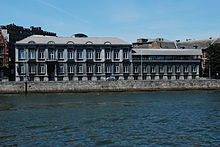
The different stages of education are the same in all communities:
- Basic education (Dutch: basisonderwijs; French: enseignement fondamental), consisting of
- Pre-school (kleuteronderwijs; einseignement maternel): -6 years
- Primary school (lager onderwijs; enseignement primaire): 6–12 years
- Secondary school (secundair onderwijs; enseignement secondaire): 12–18 years
- Higher education (hoger onderwijs; enseignement supérieure)
- University (universiteit; université)
- Polytechnic (hogeschool; haute école)
Education is organized by the regions (Dutch-speaking Flanders on the one hand, French and German speaking Wallonia on the other) and the small federal district of Brussels has schools run by both the Flemish and Walloon authorities. Both states recognize independent school networks, which cater to far more students than the state schools themselves. Most Flemish students go to a Flemish Catholic school. However, every independent school needs to follow the official state curriculum, and Catholicism in Flanders has long been extremely liberal anyway.
作業
Having one of the highest labour taxes in Europe, Belgium is struggling to reposition itself as a high-tech country. In that struggle, Flanders is far ahead and much wealthier than Wallonia, in contrast to the previous decades, where Wallonia's steel industry was the main export of Belgium. Highly skilled people will have the most chance to find work, and knowing multiple languages (Dutch, French, English and perhaps German) is almost a standard requirement. Interim offices providing temporary jobs are flourishing in a search to avoid the high labour taxes.
Belgium has one of the highest tax rates in the world. An employer who pays a salary about €1500 a month actually pays another €1500 or more in taxes. Where does this money go to? It goes to social security. People only pay a small charge for healthcare, for example. And the budget for education, arts and culture is enormous. The budget for defense is however very tiny.
Although Belgium is undesirable for building wealth, it's a good place for someone who already is wealthy to reside because there is very little capital gains tax (some forms of capital gain is not taxed at all).
おげんきで
With the notable exceptions of certain parts of Brussels (mostly the northern and western sections of the region) and Antwerp, Belgium is a very safe country. Tourists should not have to fear for their lives when taking basic precautions and knowing where they are going. Crimes such as murder are uncommon and natural hazards are rare.
As with much of Europe, however, petty crimes like pickpocketing do occur regularly, mostly in Brussels and more touristy cities, Bruges and Antwerp being prime examples. Aggravated assaults have occurred sporadically throughout the years, but they rarely involve tourists, except in Brussels.
Muslims and people of North African or Middle Eastern ancestry may experience mild resentment from certain people, a problem that is particularly acute among older generations, in rural areas, and wealthier sections of Brussels そして Antwerp。ザ・ burqa そして niqab are illegal in public. With all that said, Belgians are noticeably more welcoming towards Muslims than other Europeans, and public expressions against Islam have become widely condemned.
People who are recognisably Jewish, such as men who wear kippot, have also experienced harassment and worse, and should check on current conditions for Jews before they go.
Marijuana laws are quite lenient, with small amounts only punishable by fines. You may get into trouble for smoking weed in public, though.
ザ・ emergency phone number in Belgium (fire, police, paramedics) is 112.
健康を維持する
In the winter, like most other European countries, only influenza will cause you a considerable inconvenience. No inoculations are needed to enter or leave Belgium.
水道水 is safe to drink throughout Belgium.
接続する
Belgium has a modern telephone system with nationwide cellular telephone coverage, and multiple internet access points in all cities, free in most libraries. Also in multiple gas stations, NMBS/SNCB train stations and diners on the highways there is Wi-Fi available.
- Many cafés offer free Wi-Fi nowadays, but don't write it on the door for whatever reason...
- if you can't find any you can always fall back on Quick, McDonalds, Lunch Garden, Carrefour Planet または スターバックス which all offer free Wi-Fi.
Belgium has some of the slowest internet speeds in Western Europe.
モバイル
Belgium uses the GSM standard of cellular phones (900 MHz and 1800 MHz bands) used in much of the world except parts of the Americas. There are three main companies (Proximus, Orange and Base, and a large number of MVNOs) offering wireless service. The country is almost totally covered.
It is no longer possible to buy anonymous prepaid SIM cards in Belgium as a result of new Belgian anti-terror legislation. Buying a SIM card in advance from Mobile Vikings now requires name and address registration. If you stay for some time, buy a pre-paid cell phone card that you can use in any phone that supports the GSM standard on the 900/1800 MHz bands. With these cards, incoming calls and SMSes are generally free. You can get SIM cards for the three main companies in dedicated phone shops.
All networks provide UMTS and HSDPA (3G) mobile internet coverage, and are rolling out a 4G network, mainly in the big cities.
尊敬
Giving tips in bars or restaurants is virtually unheard of, even in larger cities. Doing so does shows that you were satisfied with the service given, but you are absolutely not obliged to do so. Depending on the total, a tip of €0.50 に €2.50 is considered generous.
Belgians in general are very proud of their comic book artists. The "Belgian school of comic books" is hailed as a national point of pride. There are dozens of beautiful yet expensive merchandise items, and the Belgians are fond of them. A plastic figurine of a comic book character or a special artwork of a hailed comic book artist would be a perfect gift for your Belgian friends and in-laws, for example.
Try to show appreciation for some of the things made in Belgium. For instance, French fries, beers, comic books, chocolate, and the like. Inquiries about them will be welcomed and appreciated by the vast majority of Belgians.
Do not speak French in Flanders or Dutch in Wallonia. Even if you're looking to practice your language skills, try not to speak the wrong language in the wrong region as it can be considered offensive. Some people won't hesitate to either dismiss you or at worst give an icy response. This doesn't apply to the German-speaking areas (as the German-speaking community is an observer in the Flanders-Wallonia dispute) and Brussels. As a tourist, it's better to communicate in English as it's considered to be the "diplomatic" language of the country.
ザ・ Flanders-Wallonia dispute and the possibility of Belgium partitioning are highly controversial issues and should be avoided. You should avoid discussing them where possible.
As with many countries in Europe, Inquiring about someone's salary or talking about your own is uncommon and in conversation is a great way to make someone feel uncomfortable. Similarly, discussing personal, political, or religious convictions are no-go areas until you're better acquainted with someone.
Do not tell the Walloons (and most of the people of Brussels) that they are French. Most Walloons, despite speaking French, are not and do not consider themselves French. And, for similar reasons, do not tell the Flemish (and also the people of Brussels) that they are Dutch. Most Flemings, despite speaking Dutch (Flemish), are not and do not consider themselves Dutch. The same applies to the 75,000 German-speaking Belgians, who have a heavy historical background with their neighbour Germany.

